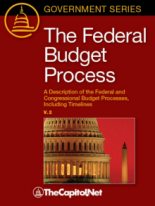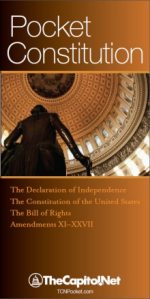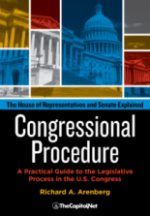From the Congressional Glossary – Including Legislative and Budget Terms
Lame Duck / “Lame Duck” Session

When Congress (or either chamber) reconvenes in an even-numbered year following the November general elections to consider various items of business. Some lawmakers who return for this session will not be in the next Congress. Hence, they are informally called “lame duck” members participating in a “lame duck” session.
Also see
The Lame Duck Explained
A “lame duck” session of Congress occurs whenever one Congress meets after its successor is elected but before the end of its own constitutional term. Under present conditions, any meeting of Congress between election day in November and the following January 3 is a lame duck session. Prior to 1933, when the Twentieth Amendment changed the dates of the congressional term, the last regular session of Congress was always a lame duck session. Today, however, the expression is primarily used for any portion of a regular session that falls after an election.
Lame duck sessions can occur in several ways. Either chamber or both chambers may (1) provide for an existing session to resume after a recess spanning the election; (2) continue meeting in intermittent, or pro forma, sessions during the period spanning the election; or (3) reconvene after an election pursuant to contingent authority granted to the leadership in a recess or adjournment resolution. Two other possibilities have not occurred: (4) Congress could set a statutory date for a new session to convene after the election, then adjourn its existing session sine die; and (5) while Congress is in recess or sine die adjournment, the President could call it into extraordinary session at a date after the election.
During both the sporadic and the consistent periods, election breaks have usually begun by mid-October and spanned between one and two months. Congress has most often reconvened in mid-November and adjourned before Christmas so that the lame duck session lasted about a month. However, in five out the past six Congresses, lame duck sessions have continued into January, producing later adjournments, longer sessions, and more days convened in daily sessions.
Lame duck sessions have been held for a variety of reasons. Their primary purpose is to complete action on legislation. However, they have also been used to prevent recess appointments and pocket vetoes, to consider motions of censure or impeachment, or to keep Congress assembled on a standby basis. In recent years, most lame duck sessions have focused on program authorizations, trade agreements, appropriations, and the budget.
More
- “Lame Duck Sessions of Congress, 1935-2004 (74th-108th Congresses),” CRS Report RL33677 (39-page PDF
 )
) - “Lame Duck Sessions of Congress, 1935-2020 (74th-116th Congresses),” CRS Report R45154 (36-page PDF
 )
) - “Annual Appropriations Acts: Consideration During Lame-Duck Sessions,” CRS Report RL34597 (24-page PDF
 )
) - “The Enactment of Appropriations Measures During Lame Duck Sessions,” CRS Report R46574 (19-page PDF
 )
) - “Beginning and End of the Terms of United States Senators Chosen to Fill Senate Vacancies,” CRS Report R41031 (8-page PDF
 )
) - “Presidential Transitions: Issues Involving Outgoing and Incoming Administrations,” CRS Report RL34722 (56-page PDF
 )
) - “House Committee Chairs: Considerations, Decisions, and Actions as One Congress Ends and a New Congress Begins,” CRS Report RL34679 (35-page PDF
 )
) - “‘Marbury v. Madison Returns’! The Supreme Court Considers the Scope of ‘Judicial Power’,” CRS Legal Sidebar LSB10059 (xx-page PDF
 )
) - Lame duck (politics) – Wikipedia
Master Your ‘Lame Duck’ Step-Over Turns | Kathryn Morgan
Courses
- Congressional Operations Briefing – Capitol Hill Workshop
- Drafting Federal Legislation and Amendments
- Writing for Government and Business: Critical Thinking and Writing
- Custom Training
- Congressional Operations Poster, with Federal Budget Process Flowchart
- Federal Budgeting, a Five-Course series on CD
- Congress, the Legislative Process, and the Fundamentals of Lawmaking Series, a Nine-Course series on CD
Publications

The Federal Budget Process 2E |

Pocket Constitution |

Citizen’s Handbook to Influencing Elected Officials: A Guide for Citizen Lobbyists and Grassroots Advocates |

Congressional Procedure |
CongressionalGlossary.com, from TheCapitol.Net
For more than 40 years, TheCapitol.Net and its predecessor, Congressional Quarterly Executive Conferences, have been teaching professionals from government, military, business, and NGOs about the dynamics and operations of the legislative and executive branches and how to work with them.
Our custom on-site and online training, publications, and audio courses include congressional operations, legislative and budget process, communication and advocacy, media and public relations, testifying before Congress, research skills, legislative drafting, critical thinking and writing, and more.
TheCapitol.Net is on the GSA Schedule, MAS, for custom on-site and online training. GSA Contract GS02F0192X
TheCapitol.Net is now owned by the Sunwater Institute.
Teaching how Washington and Congress work ™

